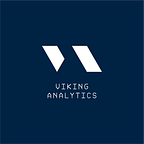Creating a degradation monitoring solution for electrical motors and switchgears
Viking Analytics was one of the winners of the 2020 edition of the ABB Electrification Virtual Startup Challenge, that invited startups to compete in a ten-day challenge to create safer, smarter, and more sustainable solutions in the electrical energy sector. In the joint project that followed the competition, Viking Analytics and ABB explored the possibilities of using the long term collected data for predictive features, most notably degradation monitoring.
Background
Advanced electrical switchgear and motor controllers allow for collection of numerous measurements relating to electrical or operational aspects. Mostly, this data is used for supervision and monitoring, but when analyzing it over long time periods or for many assets, predictive features can be realized, allowing for more efficient planning of maintenance intervals, or failure prevention.
ABB had data from large installed base of electrical motors, controlled via switchgear with an integrated motor controller. Historical data had been collected over long times with a periodicity of a couple of seconds.
Degradation Monitoring
Our approach relies on the fact that assets do degrade over time and that no “self-healing” of the assets will occur. Thus, degradation should either be reflected in the measured data, for example as rising startup currents and rising temperatures operations, or to be expected from usage statistics like total operating time or operating actions (like switching occurrences).
To create a solution which provides customer value in a straightforward and simple way, two challenges were to be solved: (a) to devise a criterion selection of the most suitable channels of the recorded data for degradation monitoring and (b) to combine the selected data into a single, user-friendly criterion.
Solution
Based on the expected behavior of indicators reflecting degradation, an algorithmic criterion was developed, which allowed the selection of the most relevant indicators from the recorded data. For example, indicators for degradation should mostly show a monotonous development over time, reflecting the assumption that no self-healing will occur. They were then reviewed with the subject matter experts, after which the algorithmic criterion was applied to a final selection.
Given this set of indicators, the next step was to combine them into a single health index. For that, we used a dimensionality reduction technique, which calculated a weighted single health index from the ingoing indicators. By means of the dimensionality reduction, we achieve our goal of complexity reduction for the end user and provide just a single value representing the current health of a motor or switchgear.
This single value in relation to a threshold value will then be used to indicate the necessity of a maintenance action at some point in time. Also, by condensing the information in just a single value, a maximally compact display of the asset health is possible, allowing an easy overview of many assets in a company-wide dashboard display, for example.
The main challenge encountered during the project was that, although a lot of data was collected, the high reliability of the assets, especially the switchgears, makes continuous data collection and failure analysis key to achieve accurate indicators for scheduling maintenance actions. Our approach, combined with modern switchgears which are increasingly provided with monitoring capacity, enables health analysis and maintenance planning.
Originally published at https://vikinganalytics.se on September 21, 2021.
